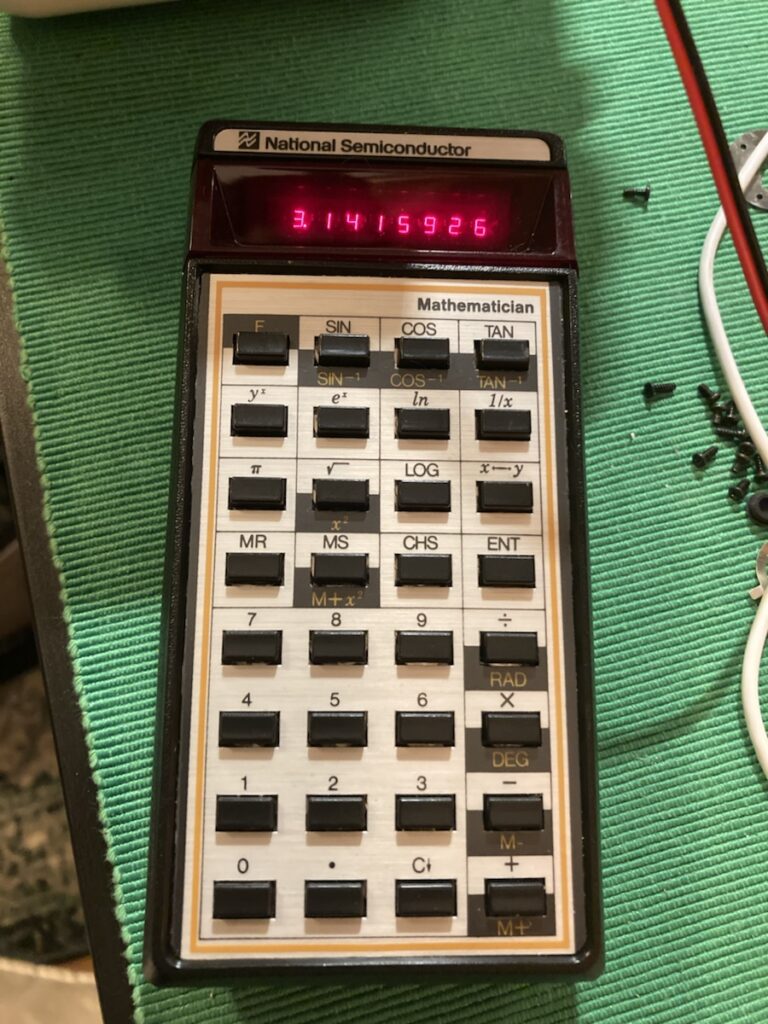I have a small collection of vintage calculators that I stumbled into collecting. I found one at a garage sale, and then one was given to me, then I found a neat one on eBay for a good price… Before I knew it, I was a calculator collector.
I actually use most of them despite having a great calculator app on my phone because I prefer their physical interfaces. I have one on each desk and one in my bag so I don’t have to go searching. I don’t have that many bags and desks though so there is also a small stash in a drawer.

My latest addition is a National Semiconductor 4510 Mathematician from the mid 70s. It has an 8 digit red LED display and runs on a 9 volt battery. There is a jack on the top edge for connecting a wall supply if you’ve got a lot of math to do.
It is in great condition and the seller even included a brand new battery. It is one of the lesser RPN calculators of the 70s and not expensive. Like most of my collection, is not valuable but it is uncommon.
This model isn’t programmable although they made a version that was called the Mathematician PR. Those are a little bit more rare but their programmability is so limited that I didn’t want to deal with finding a nice one at a price I wanted to pay. I also know that personally I do not use the programmability of much nicer calculators I already have so it wasn’t something I’d use anyhow.
What makes this model stand out is its RPN entry method. If you’re not familiar with RPN, there are some great introductions online. I tried to explain it recently and was told that it sounded insane. You get used to it! It starts to make sense… eventually.
This model’s main downside is that it doesn’t do scientific notation, so the range is limited. Some of the math I do most often is around calculating values for circuit components. They are specified in orders of one thousand units. So for example, resistors are commonly available in units of ohms, kilo ohms, and mega ohms. This means you do a lot of math with numbers involving 10^3 and 10^6. Capacitors are similar but much smaller units. You often deal with pico farads – that’s 10^-12. So I’ll have to keep track of the exponents myself when doing those kinds of calculations.
The NatSemi Mathematician is delightfully slow for some operations. For example computing a logarithm of a number is slow enough that the calculator displays an animation of sorts to show that it is “thinking”.
I don’t know how much I’ll use this addition to my collection. If I leave it where I can see it, I’ll use it occasionally if only as a muse for an earlier time in computing history.
